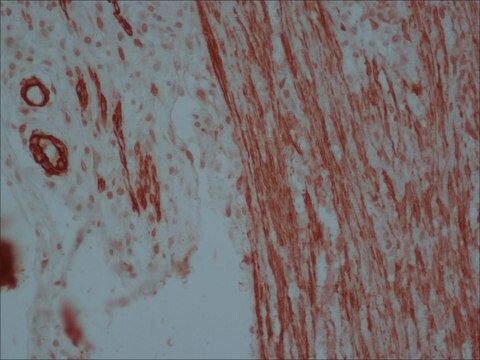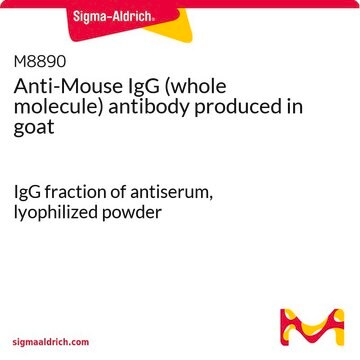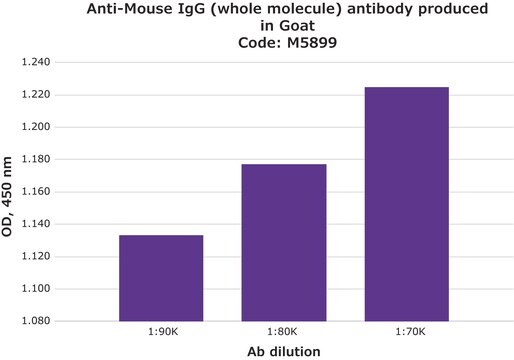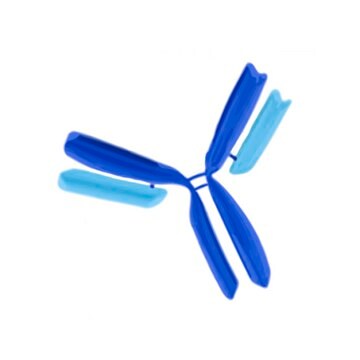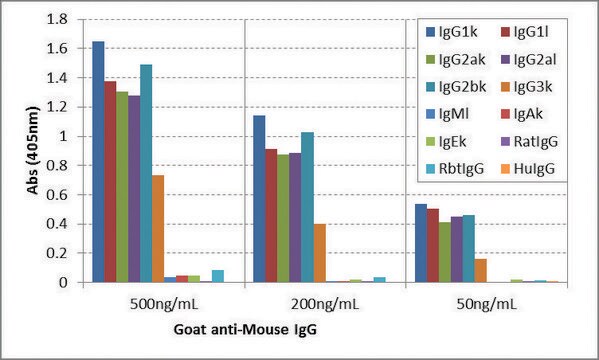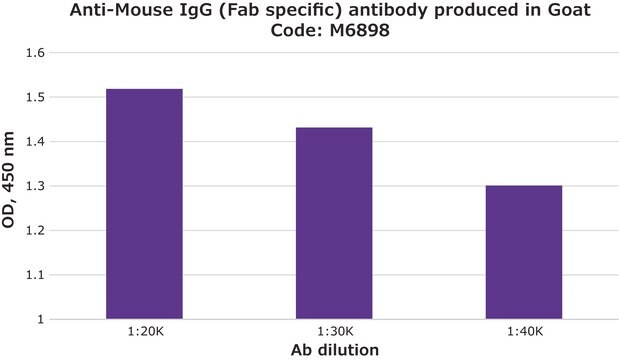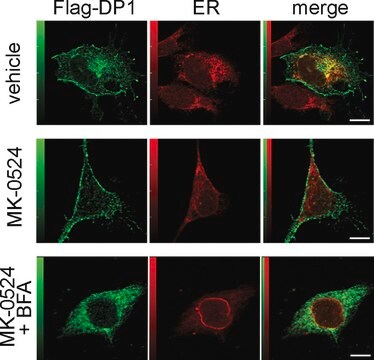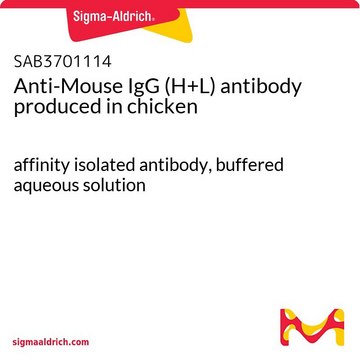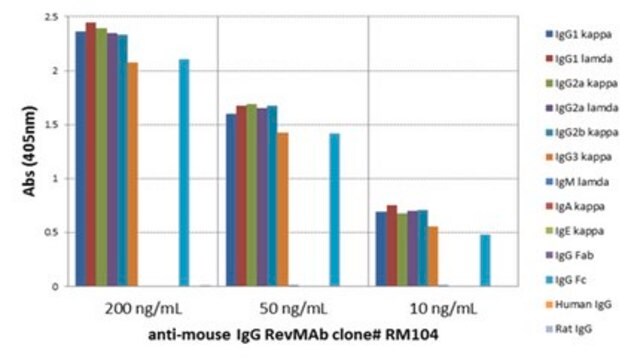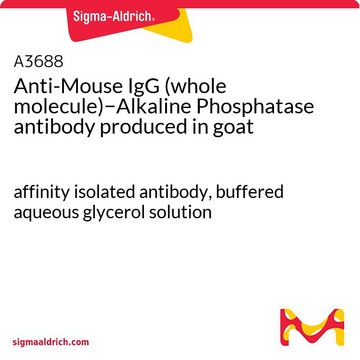M8642
Anti-Mouse IgG (whole molecule) antibody produced in goat
affinity isolated antibody, lyophilized powder
Synonim(y):
Przeciwciało anty-mysie
About This Item
Polecane produkty
pochodzenie biologiczne
goat
Poziom jakości
200
300
białko sprzężone
unconjugated
forma przeciwciała
affinity isolated antibody
rodzaj przeciwciała
secondary antibodies
klon
polyclonal
Formularz
lyophilized powder
metody
Ouchterlony double diffusion: suitable
temp. przechowywania
2-8°C
Szukasz podobnych produktów? Odwiedź Przewodnik dotyczący porównywania produktów
Opis ogólny
Anti-Mouse IgG (whole molecule) antibody recognizes IgG1, G2a, G2b, and G3, mouse IgM and IgA. The identity and purity of affinity isolated antibody is established by immunoelectrophoresis.
Immunogen
Zastosowanie
Enzyme-linked immunosorbent assay (1 paper)
Postać fizyczna
Rekonstytucja
Oświadczenie o zrzeczeniu się odpowiedzialności
Nie możesz znaleźć właściwego produktu?
Wypróbuj nasz Narzędzie selektora produktów.
Kod klasy składowania
11 - Combustible Solids
Klasa zagrożenia wodnego (WGK)
WGK 3
Temperatura zapłonu (°F)
Not applicable
Temperatura zapłonu (°C)
Not applicable
Środki ochrony indywidualnej
Eyeshields, Gloves, type N95 (US)
Wybierz jedną z najnowszych wersji:
Masz już ten produkt?
Dokumenty związane z niedawno zakupionymi produktami zostały zamieszczone w Bibliotece dokumentów.
Klienci oglądali również te produkty
Nasz zespół naukowców ma doświadczenie we wszystkich obszarach badań, w tym w naukach przyrodniczych, materiałoznawstwie, syntezie chemicznej, chromatografii, analityce i wielu innych dziedzinach.
Skontaktuj się z zespołem ds. pomocy technicznej



